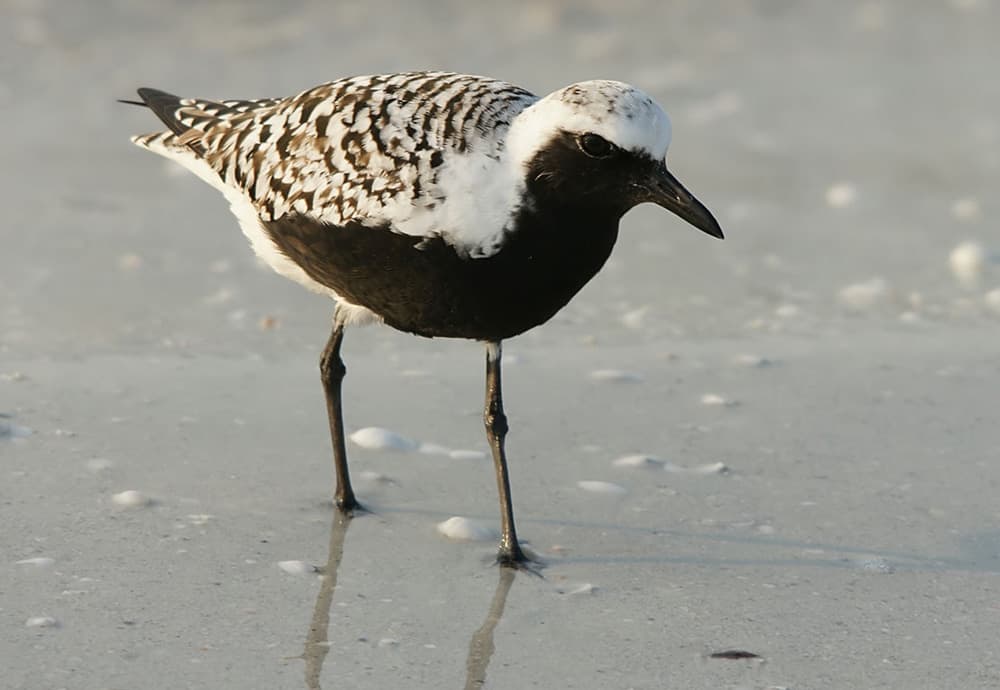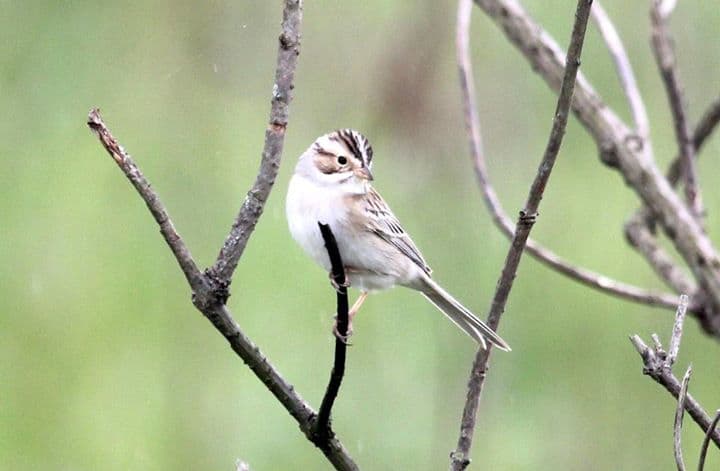Look For
Juncos are medium-sized (6 ¼ inches long) sparrows, but unlike most sparrows, their plumage lacks streaking. Dark-gray above and white below (or “gray skies above, snow below”), the junco has a conical, pinkish bill and flashes its white outer tail feathers in flight.
Male juncos in the East are a darker gray than the brownish-overall females. Western junco forms show a variety of plumage colors, and many of these color forms were considered separate species until recently. Now they are all lumped into a single species: dark-eyed junco.
Listen for
Juncos make a variety of sounds, all of them high-pitched tinkling trills, especially when flushed from cover. They sing a long ringing trill—tiitiitiitiitiitii—that sounds similar to a Chipping Sparrow’s song but is slower and more musical. They also give a number of chip notes (tick!) and short buzzes in all seasons.
Find It
The dark-eyed junco is often called the “snowbird,” because it seems to show up at our feeders and in our backyards at the same time as the first snows begin falling over much of the country. But even in the Deep South, this member of the sparrow family is a familiar winter visitor to backyards, gardens, parks, pastures, and feeding stations.
Few bird species’ ranges cover North America more thoroughly than that of the dark-eyed junco. In winter it can be found in every state. Spring migration begins as early as March and continues through early June. During breeding season, juncos retreat to the far north woods and to coniferous and mixed woodlands at high elevations. Fall migration begins in mid-August through October. Their winter habitat preferences run to brushy edge habitat along woods, fields, and suburban backyards and parks.
Feed it
Juncos find their food on the ground. They are often seen scratching through the leaf litter, grass, or snow when foraging. In spring and summer the junco eats mostly insects, including spiders, caterpillars, ants, grasshoppers, and weevils, but it will also eat berries. In fall and winter the diet shifts to grass and weed seeds, along with birdseed gleaned from the ground beneath feeders.
Nesting Behavior
The junco’s nest is a simple, open cup of grasses and leaves, loosely woven and lined with finer grasses, fur, or feathers. Nests are normally located on the ground in a concealed spot and built by the female. She incubates her three to five eggs for almost two weeks; the male helps with feeding chores once the young hatch. Within two weeks the young birds leave the nest, and the parents are free to start another brood if the season permits.
WOW!
The folk name of Snowbird is for their winter-weather coloration (gray skies above, snow on the ground) and because they appear at feeders at the first snowfall.
Listen to the dark-eyed junco:




